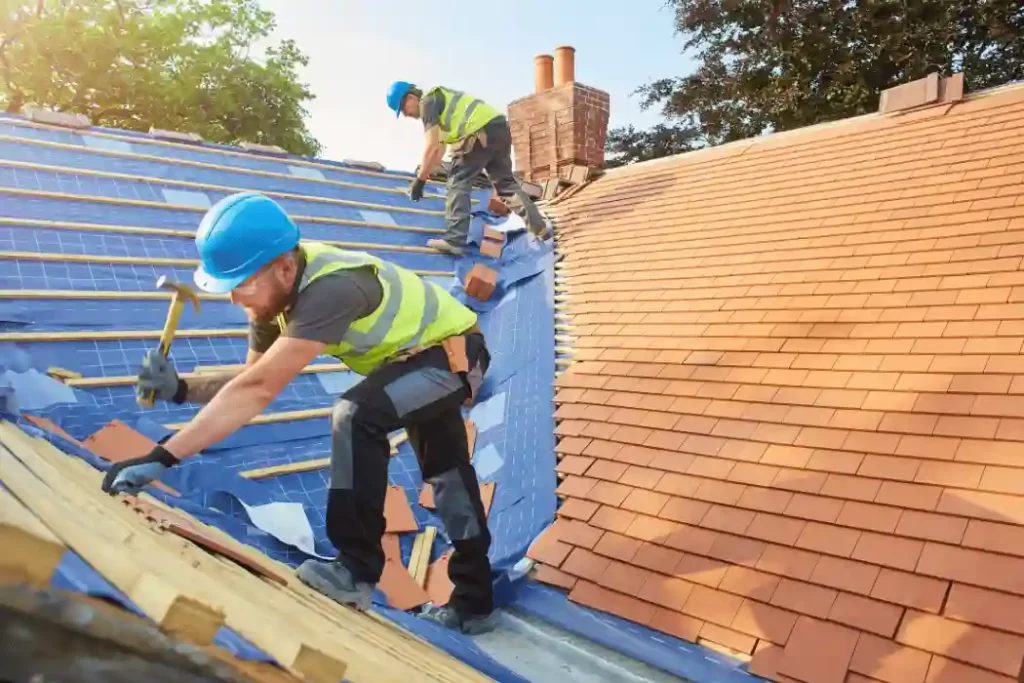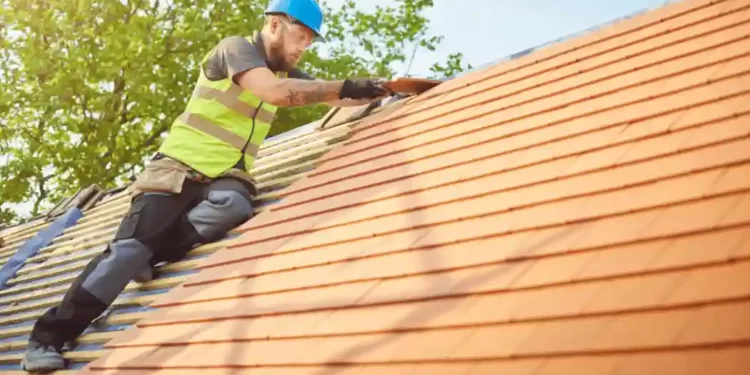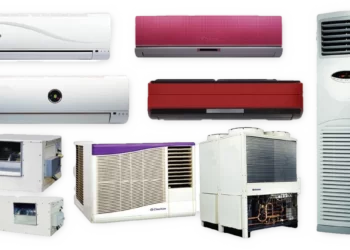As the world continues to prioritize sustainability and environmental consciousness, the construction industry has seen a significant shift towards eco-friendly practices, and roofing is no exception. A green future calls for innovative and environmentally responsible roofing solutions that not only provide protection and durability but also minimize their impact on the planet. Embrace a sustainable home renovation by exploring eco-friendly roofing solutions that contribute to a greener future, promoting energy efficiency and environmental consciousness. In this article, we’ll explore some of the top eco-friendly roofing options available today, designed to pave the way for a greener and more sustainable tomorrow.
1. Cool Roofs: Reducing Urban Heat Island Effect
Cool roofs, also known as reflective roofs, are designed to reflect more sunlight and absorb less heat than traditional roofs. They are typically coated with special reflective materials that bounce back a significant portion of the sun’s rays. By doing so, cool roofs help reduce the urban heat island effect, where cities become much warmer than surrounding rural areas due to heat absorption by buildings and dark surfaces.
1.1 Benefits of Cool Roofs
- Energy Efficiency: Cool roofs can help lower indoor temperatures, reducing the need for air conditioning and, consequently, energy consumption, leading to lower electricity bills and reduced greenhouse gas emissions.
- Extended Roof Lifespan: By minimizing heat absorption, cool roofs experience less thermal expansion and contraction, resulting in reduced wear and tear and ultimately prolonging the roof’s lifespan.
- Improved Comfort: Cooler indoor temperatures create a more comfortable living and working environment, enhancing productivity and well-being.
- Mitigating Climate Change: Reduced energy consumption and greenhouse gas emissions contribute to global efforts to combat climate change.

2. Green Roofs: Embracing Nature on Your Rooftop
Green roofs, also known as living roofs or rooftop gardens, are an excellent example of sustainable roofing practices. These roofs incorporate vegetation, such as grass, plants, and even trees, on top of a waterproofing membrane. Green roofs provide a multitude of benefits for both the building and the environment.
2.1 Advantages of Green Roofs
- Improved Air Quality: Green roofs help filter pollutants and CO2 from the air, leading to cleaner and healthier urban environments.
- Stormwater Management: Vegetation on green roofs absorbs rainwater, reducing stormwater runoff and alleviating pressure on city drainage systems.
- Thermal Regulation: The plants and soil act as natural insulators, reducing heat transfer between the building and the outdoors, thereby decreasing cooling and heating needs.
- Biodiversity Support: Green roofs provide habitat and food for birds, butterflies, and other pollinators, supporting urban biodiversity.
- Aesthetic Appeal: Beyond their environmental benefits, green roofs enhance the visual appeal of buildings and contribute to a more attractive urban landscape.
3. Solar Roofing: Harnessing Renewable Energy
Solar roofing is a rapidly growing eco-friendly solution that combines roofing materials with solar panels to harness clean and renewable energy from the sun. Solar panels can be integrated seamlessly into various roofing types, providing an efficient way to generate electricity for residential and commercial properties.
3.1 Benefits of Solar Roofing
- Renewable Energy Generation: Solar roofing allows property owners to generate their electricity sustainably, reducing their reliance on fossil fuels and conventional energy sources.
- Cost Savings: Over time, solar roofing can lead to significant cost savings on electricity bills, making it a financially viable investment.
- Reduced Carbon Footprint: By utilizing solar power, individuals and businesses can substantially decrease their carbon footprint, contributing to a cleaner environment.
- Energy Independence: Solar roofing promotes energy independence, making properties less susceptible to power outages and energy price fluctuations.
4. Recycled Roofing Materials: Giving New Life to Old Products
Opting for roofing materials made from recycled content is an eco-conscious choice that reduces the demand for new raw materials and minimizes waste. Many roofing products now incorporate recycled materials, offering a sustainable alternative without compromising on quality and durability.
4.1 Environmentally Friendly Materials
- Recycled Shingles: Roofing shingles made from recycled materials, such as reclaimed asphalt shingles, provide an eco-friendly alternative to traditional asphalt shingles.
- Recycled Metal Roofing: Metal roofing made from recycled materials, like aluminum or steel, is not only durable and long-lasting but also highly recyclable at the end of its lifespan.
- Recycled Rubber Roofing: Rubber roofing tiles made from recycled tires are lightweight, resistant to damage, and provide an excellent option for flat or low-slope roofs.
5. Rainwater Harvesting: Sustainability Below the Surface
While not directly a roofing material, rainwater harvesting systems can complement any eco-friendly roofing solution. These systems collect and store rainwater that falls on the roof, which can then be used for various non-potable purposes, such as irrigation, flushing toilets, and washing clothes.
5.1 Benefits of Rainwater Harvesting
- Water Conservation: Rainwater harvesting reduces the demand for municipal water supply, conserving this precious resource.
- Cost Savings: By using harvested rainwater, property owners can lower their water bills, leading to substantial savings over time.
- Resilience: Rainwater harvesting systems offer resilience during droughts or water shortages, providing an independent water source.
- Reduced Runoff: By capturing rainwater, these systems minimize stormwater runoff and its potential impact on the environment.
Conclusion
Embracing eco-friendly roofing solutions is not only a wise choice for the planet but also for the long-term well-being of your property. Cool roofs, green roofs, solar roofing, recycled materials, and rainwater harvesting all contribute to creating a greener future. By incorporating these sustainable roofing options into your building projects, you’ll not only leave other websites behind in terms of environmental responsibility but also play an active role in shaping a more sustainable and resilient world for generations to come.








Comments 3